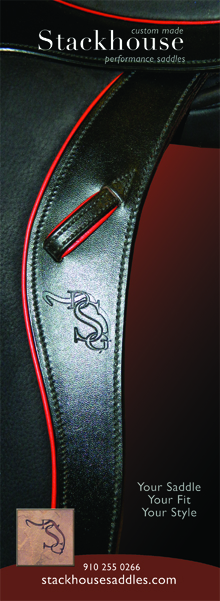Search the Site
Guest Blog post # 105: "Meet the New USDF Dressage Tests" by Bill Woods
Not unlike the cicadas hatching out, every four years we are treated to a new set of dressage tests to complain about, habituate ourselves to, and then act like they’ve been this way forever. With some cycles there are big changes, but if the older ones were generally satisfactory, the rewrites are small. This year’s versions generally fall into the latter category. Some tests are virtually unchanged. Others are modified in such minor ways that they are likely just to keep the judges’ whistles busy calling people off course.
Let’s start at the beginning. Rest easy—the patterns of the new Introductory tests are identical to the old ones.
The new Training Level tests are equally unchanged in Tests 1 and 2, save for some additional double coefficients, but this will not affect the way you ride them or, for that matter, the way they are judged. You can claim that the writers wanted to call your heightened attention to a few specific movements, but hey, there’s so little going on in these tests, that if you aren’t paying attention to everything, what ARE you doing out there?
Across the board Test 3 is most different and I would argue somewhat easier. Gone are the “loops” that hardly anyone rode correctly anyway, replaced by three loop serpentines width of the arena. If you can ride an accurate 20 m circle and know where to cross the centerline each time, you know how to make a correct serpentine. Be perpendicular as you cross the centerlines and, remember, if your serpentine has flat sides or goes in the corners, the terrorists win! Also in Test 3, no longer must you canter across the diagonal to X. However, there is one tiny hang up. After a 20 m circle at B, the right lead canter comes down the long side (score the canter) to a trot transition at A (another score), and then in the blink of an eye “Before K Medium Walk, K-E Medium Walk” (score the walk including the transition from trot to walk). There’s a lot of opportunity to screw up right there unless you are well prepared as you turn the F-A corner in the canter!
Moving on to First Level, here are some opportunities for the judge’s whistle: The new Test 1 is largely the same as the last edition except the trot lengthenings go from H to P instead of F to S and K to R instead of V to M. Both canter lengthenings start one letter earlier (at the corner marks) instead of at S and R. The rest is identical. Test 2 is not changed at all.
There are bigger changes in First Level test 3. Gone is many riders’ bugaboo – the leg yield from the corner in to the centerline and back out. They have been replaced by a pattern we saw in the 1987 tests (those of us doing Dinosaur Dressage back then remember!) where you leg yield from the track at V in to the centerline and make a 10 m circle to the outside, continue to the end of the arena and repeat the same pattern on the opposite hand. The canter retains the same three elements in each direction but now instead of “Circle, lengthen, loop,“ the order is “Loop, circle, lengthen.” (Do I hear more tweeting?) This may be a bit easier for horses which in the past got strong in the lengthening and would not re-balance for the counter canter.
Second level: Probably of more interest to judges than riders is at the end of the Medium Trot movements— the transition block now includes the Collected Trot around to where the next movement begins. In the past the transitions were scored alone, and if there was a mistake in the Collected Trot prior to the next instruction, it counted in the Medium Trot block. Somewhat surprisingly, aside from the canter serpentine with the simple changes being moved later to Test 2, Test 1 has no simple changes in it at all! Instead, the pattern reads “Short diagonal in the canter M–E, counter canter to V, trot at V, walk at K, and then left lead canter at A. Much easier!
In Test 2 rather than begin with Medium on the diagonal and then shoulder-in, you track right and go directly to shoulder-in M-B. The 3 loop serpentine with the simple changes is in this test, but not as the first canter movement. It comes directly after a Medium, testing your ability to re-collect enough to make the simple changes viable. Another oddity in this test – a Medium Trot on the final centerline from D to I. As a judge you can see straightness and suspension from that angle, but not much else. Not my favorite innovation in the new tests! In Test 3 everything stays the same.
Likewise for Third Level test 1 – nothing new. Test 2 is largely unchanged. It still has the shoulder-in to renvers, but they serve as the only lateral work in the trot since the trot half passes have been removed. As in the retired version, there is still canter half pass on the easy line from D to R and D to S. Test 3 remains as is.
Fourth Level test 1 is much the same as before. You still have the Medium-collect-medium on the diagonal and the half pass to the centerline, 10 m circle, shoulder-in towards G. Then, RING THE BELL, track right instead of left now. That puts the canter depart at C instead of G, but the rest of the test plays out the way it has in the past with half pass to counter canter to flying change at the corner letter, the Very Collected canter on the circle over the centerline, and finishing with the three flying changes at quarterline , centerline and quarterline.
Test 2: as we know and love it. It has one set of three changes every four strides.
And finally the new Test 3 made shorter and a little bit easier…The 4-4-4 Swing is gone, replaced by a simple four step reinback. The extended walk is on the diagonal, no longer on the half 20 m circle. The Working Half Pirouettes remain but are done back to back at the A end of the arena, And there is only one set of tempis – three every three strides. The 4 tempis are back on the shelf until Prix St. George. One other anomaly: the first movement after the entrance is an Extended trot on the diagonal. Near the end of the test you are asked to show a Medium on the long side.
All this happens for real on the first of December. If you are new to the sport, the test changes may seem traumatic, but like breaking in a new pair of boots, pretty soon they’ll feel like home. If you’re one of those individuals whose boots always pinched no matter what, I can only recommend Advil and a glass of sherry before you show.






